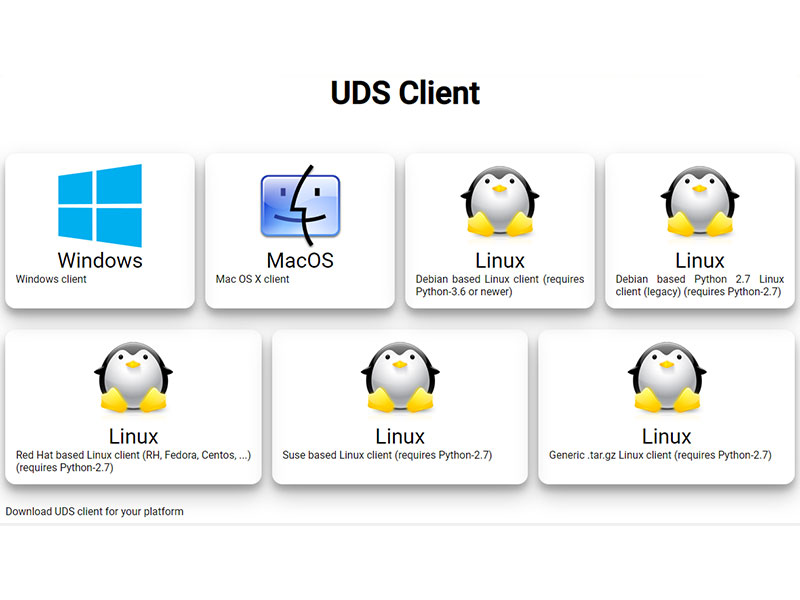In addition to renaming, all available clients for the different supported operating systems have been updated to the latest version. It should be noted that the UDS Client for Debian-based Linux distributions now uses Python 3, making it compatible with Ubuntu 20. In this way, devices with Ubuntu 20 can be used to connect with UDS Enterprise.
As for UDS Actors, all employed for VDI Windows and Linux have been updated, improving their functionality and adding an interesting option: now it is possible to launch scripts at different stages of the configuration process.
To do this, a new tab has been added in the UDS Actor configuration wizard. As can be seen below, the “Advanced” tab has different fields to include the types of scripts we want to use, and define the logs:

-
Preconnect: this script will run just before the user connects to the virtual desktop. We can, for example, indicate that it maps the user with a certain network drive. The system will automatically apply a series of parameters (username, protocol, IP, hostname) that can be used in the script.
-
Runonce: this script will be run only once before the UDS Actor has been configured. Parameters can be applied directly to it. It is used, for example, to apply a “Sysprep”.
-
Postconfig: this script will be run once the UDS Actor is finished its configuration. For example, it allows mapping a printer to a machine.
-
Log Level: the types of logs to be displayed in the UDS Actor log files.
Finally, two new UDS Actors have been created for Windows and Linux to optimize the management and control of computers with fixed IP (static devices), whether physical or virtual. This new development allows control of user sessions on static machines. When a user logs out, the machine is released so that it can be assigned to another user. We will dig deeper into the operation and possibilities of this new element in another article that we will publish on our blog.
We remember that all these improvements, together with the other ones we unveiled in previous publications, are included in the new version UDS Enteprise 3.0, which is currently in beta phase. For any questions about this new release or any aspect related to our VDI and vApp broker, you can contact our team at [email protected]








0 Comments